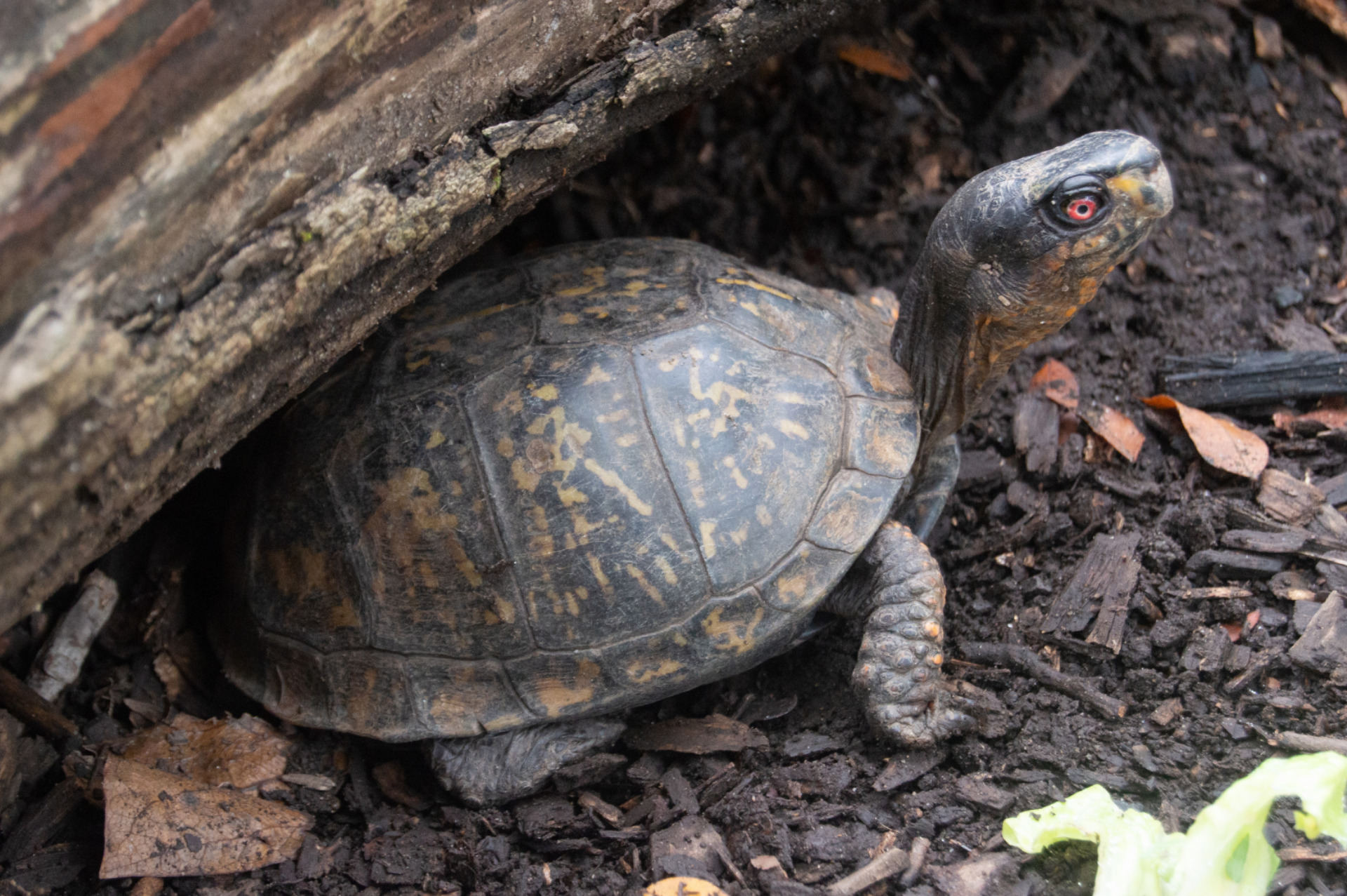Eastern Box Turtle

Basic Information:
Scientific Name: Terrapene carolina carolina
Habitat: Eastern box turtles are found throughout the forested regions of the eastern United States.
Diet: Eastern box turtles are omnivores and are known to eat berries, mushrooms, roots, greens, insects, and invertebrates such as snails, slugs, and worms.
Size: 0.5 to 0.6 feet long
Weight: Around 2 pounds
Lifespan: 30 to 50 years in the wild. Up to 100 in human care!
Distribution Map:
I.U.C.N. Conservation Status

What does this mean?
Vulnerable – a species determined by the International Union for Conservation of Nature (I.U.C.N.) to possess a high risk of extinction as a result of rapid population declines of 30 to more than 50 percent over the previous 10 years (or three generations), a current population size of fewer than 1,000 individuals, or other factors.
Our Ambassador Eastern Box Turtle:
Crocker – Born January 1st, 1985
About Eastern Box Turtles:
Eastern box turtles are the most widespread box turtle species in the world and can be found along the entire east coast of the United States and as far west as Texas! Box turtles get their name from their ability to fully enclose themselves inside their shells thanks to their hinged plastron. What makes the Eastern box turtle unique, though, are the distinct yellow and brown markings on their shell and the four toes found on their back feet. They have excellent eyesight and smell to help them find food throughout their habitat. While they are opportunistic omnivores most of the time, younger turtles tend to prefer a carnivorous diet while older turtles go for a more herbivorous diet.
Did You Know?!
- Box turtle shells are unique, with hinges on the underside that allow the turtle to pull in and close up completely when threatened. Once ‘boxed’ in, their shells are almost impossible to pry open.
- Males box turtles usually have red eyes and a concave plastron (bottom of their shell), while females have brown eyes and a flat plastron (bottom of their shell).
- Baby box turtles are rarely seen! The hinge for their shell does not develop until 3 or 4 years.
- Female box turtles can not reproduce until they are about 10 years old.

